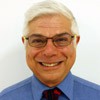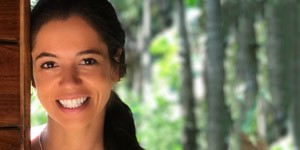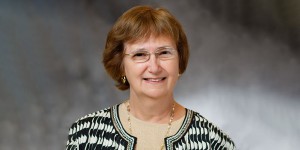By Joseph J Morgan

BA from Penn State University in General Arts and Sciences. MD from Drexel University (Hahnemann) 1984, Philadelphia, Pennsylvania (PA), USA. Further training in Ob/Gyn and internal medicine. General practitioner for adults, consultant in pharma for drug safety, clinical development, and medical monitor of clinical trials. Issued patent for cannabinoid treatment of organophosphate toxicity (chemical war nerve agents). Professor of Cannabis Education, Substance Use Disorders Institute, University of the Sciences, Philadelphia, PA, USA (oldest pharmacy school in USA). Guest Scientist, Biology, (cannabinoid research lab) Wm. Patterson University. Medical Advisor to Cannabis grower/processor Parea BioScience, PA, USA, Undoo.com (antidote for THC psychotoxicity/tolerance); Green Flower Media faculty (videos on ECS and addiction), and Ryliessunshine.com (Cannabis consultations). Diplomate, American Academy of Cannabinoid Medicine (AACM). Author of “Cannabis, A Bio-spiritual Remedy for Addiction” in Cannabis as Medicine (Editor, Betty Wedman-St Louis, CRC Press), 2020.
This series of chronicles describes the personal experience of a Medical Doctor who prescribes medical cannabis in his/her country. Each article is narrated in the first person and reports the subjective experience of each expert.
Cannabis, a Schedule 1 drug (like heroin and LSD), can't be prescribed by a physician or dispensed by a pharmacy (except via limited FDA/Drug Enforcement Administration (DEA) /National Institutes on Drug Abuse (NIDA)-approved research protocols. However, in 33 of the 50 US states, a physician may certify a patient has a state qualifying "serious medical condition." These conditions are updated by state government medical marijuana (MMJ) programs. Patients use physician certification for a medical Cannabis permit (card). The process may take weeks. Patient and physician must be registered for the MMJ program. Patient must reside in and physician practice medicine in the same state.
The USA has 50 states. Each with different MMJ laws. Eleven states have adult use programs. Seventeen states have no legal MMJ or adult use programs. Some states have both. Differences between states and between medical vs. adult use programs include formulations of Cannabis and for sale at a dispensary, taxes (medical < adult use), amount that may be purchased, and if out of state residents or non-citizens may purchase Cannabis.
For example, in my state, Pennsylvania (PA), where I advised the Secretary of Health on use of Cannabis for hard drug addictions, there are no legal edibles. Many states have removed or heavily restricted medical and adult use edibles. Dried flower is most popular medical product in PA. Flower may only be vaporized. If caught smoking the medical card may be revoked. PA, which began its MMJ program in 2017, allows topicals, transdermals, suppositories, and oral formulations, (tinctures, tablets, capsules, troches, etc.). Concentrates (waxes, live resins, distillate, shatter, sauce, etc.) and state approved vapor delivery devices may be purchased. As can oil cartridges with disposable or reusable vaping pens. MMJ patients may any vaporization device. Patients may make their own edibles and legally consume them. Caregivers, both for profit and charitable, register with a state and may make purchases for specified patients. In some states caregivers may grow or cultivate and make extractions on behalf of specific patients.
Physicians in PA may be listed by the state but not directly advertise. Ethical Physicians should not recommend a specific dispensary or type, e.g., "Green Crack" or "OG Kush," a brand name, and must not have a Grower of Dispensary ownership. Physicians may recommend formulations (tincture, etc.), highest dose, and cannabinoid composition. And must educate on possible adverse reactions. There are individual and group practices of physicians that mostly or completely have MMJ certification practices.
PA was the first state to approve Cannabis use for autism and opioid use disorder. Other typical state approved indications include seizures disorders, inflammatory bowel diseases, cancer, posttraumatic stress disorder (PTSD), HIV/AIDS, glaucoma, multiple sclerosis, other chronic neurodegenerative conditions, and spasticity. Pennsylvania approved anxiety disorders a few months before the COVID-19 pandemic. Certifications, sales, and state revenue increased. and increased again starting March 2020! Several states, including PA, New Jersey, and Minnesota, require a pharmacist in the Dispensary during business hours. During the lockdowns Dispensaries, considered essential businesses, only took pick up orders.
States require physicians who certify medical Cannabis patients to first take training, typically a 4 hour course on Cannabis medicine, the endocannabinoid system (ECS), state approved qualifying serious medical conditions, record keeping, and legal issues. I am approved, via a university with a pharmacy school, to teach the certification course for physicians and pharmacists in PA. Our state "medical marijuana" program patient website is https://www.health.pa.gov/topics/programs/Medical%20Marijuana/Pages/Patients.aspx
Pennsylvania government must be paid $50 annually for a medical Cannabis card unless the patient proves poverty. Patients typically pay physicians $150-$200 cash for initial certification and $100-$175 for subsequent annual certifications. The certifying physician is not required to have been previously (or subsequently) involved with the general medical care of the patient, although our state's intent is that physicians were and are involved. The certifying physician "must maintain a medical record."
Certification-seeking patients should bring proof of qualifying condition, unless obvious! The physician who certified me, my long-term provider, identified 3 visits by suspected state undercover law enforcement agents. They wanted certification for unapproved conditions. Or could not prove they qualified.
My mentor in California was visited 11 times over several years. He insisted on performing a rectal exam on suspected agents "because the state requires a complete examination." They either refused the rectal exam, thus no certification, or underwent a rectal exam. Then he claimed the toilet room key was missing. After having to run to a toilet because of the type of lubricant, the suspected agents never returned. I know 3 US physicians who lost medical licenses after certifying recording device-wearing undercover agents.
Certification is problematic for patients with mental health challenges, and/or substance abuse issues. Certification might be denied, limited in time, amount, type (topical, CBD-predominant). The Dispensary sees the restriction. In all states, a patient < age 18 years must have a state registered guardian (caretaker).
Finding doctors to certify patients is less of a problem once a state program has been operational for several months. Rural patients may have travel issues. There is no health insurance reimbursement or coverage yet for Cannabis except for GW Pharma's EPIDIOLEX (CBD) prescribed for FDA-approved pediatric seizure disorders.
A minority of patients get a Medical Cannabis card, make rare legal purchases, and place Cannabis flower or similar appearing manufactured product in the legally state purchased container labelled with the patient's name. Economical but illegal.
State web sites are difficult to use, especially without a driver's license. Dispensaries, caretakers, patient, and social organizations typically help educate future medical Cannabis patients and/or to obtain certification. They assist with obtaining a registry which the certifying physician and state require. School policies on use by and administration to students vary by school district.
Each state has different required labelling and warnings on its products. In some states tiny print and extensive warning can't be read without a magnifying glass! Dispensaries have ATM cash dispensing machines inside or near the property.
Some western states have thousands of licensed grower/processors and/or dispensaries and lower prices. Other states, including PA, NY, NJ and Massachusetts, have fewer dispensaries and more expensive security requirements. All states require Cannabis purchases to be dispensed in child proof containers, be labelled, and not look like candy. Upon demand from police, customers must show valid sales receipt, current medical card (if applicable), and the original container. In PA, a suspected impaired driver with any THC metabolites in the urine, even if only the psychoactively inactive 11-carboxy THC metabolite, is guilty of intoxication!
Increasingly states grant reciprocity (including tax reduction if adult use) for out of state MMJ cardholders. Cannabis may never legally cross a state line. As a generalization, for the past few years police and other government agencies have focused on hard drugs, commercial size Cannabis smugglers, illegal growers, and dealers, not citizens with small amounts.
What a contrast to a few years ago. Then children given medical Cannabis by their parents, for example for epilepsy, autism, cancer pain, and relief from spasticity, were all too forcibly kidnapped and traumatized by "Child Protective Services." Loving and respectable parents were criminally charged, jailed, fined, shamed, and stripped of parental rights. In California, the first medical state (1995), patients calling doctors called from phones other than their own, disguised their voices, etc. when making certification appointments. Several states allow medical patients, and in fewer states an adult resident, to grow up to 4-6 plants for personal use. In other states a home or land used to grow Cannabis, or vehicle used for transport, and/or cash could be taken by force by the government and sold under "asset forfeiture laws." Criminal intent does not have to be proven and typically there are no criminal charges. The asset(s) not the person is considered the criminal! Assets once taken are nearly impossible to recover. Law enforcement agencies want revenue from these asset sales.
First-hand account:
My first medical practice involved medical and gynecological in a 206-bed inpatient specialty detoxification and rehabilitation hospital for drug and alcohol problems ("chemical dependencies"). We didn't admit anyone who only had a Cannabis use disorder, even if they had a psychiatric and/or medical problem! Patients who admitted marijuana use sometimes told me it helped minimize opioid withdrawal symptoms, relieve pain or both. I didn't believe them then.
Around 10 years ago, people asked me about Cannabis for their medical problems. I said I would learn about it. I was then living in the Upper Galilee of Israel. And interested in better antidotes for chemical warfare. (Most of my father's family was murdered by gas in the Concentration Camp of Treblinka in Poland. Having been deprived of grandparents, aunts, and uncles, I am sensitive to antisemitism. And especially concerned with chemical warfare and bioweapons.) Based on researching pharmacology of Cannabis and toxicology of chemical war nerve agents (e.g., sarin and VX), I concluded (life-changing "aha moment") the pharmacological and spiritual properties of Cannabis were a perfect fit (hand and glove) for multiple aspects of chemical war nerve agent toxicities. God's plant vs. man's poison motivated me! I wrote to Raphi Mechoulam, the pioneer modern Cannabis researcher, expressing my specific ideas of how Cannabis and specific cannabinoids could be therapeutic in this setting. Raphi wrote back. He agreed and helped educate and guide me. As have many of his colleagues at Hebrew University's Institute of Drug Research (the Multidisciplinary Center on Cannabinoid Research), along with Yossi Sarne, Chairman Emeritus of Pharmacology and Physiology at Tel Aviv University and Emmanuel Onaivi, my mentor at Wm. Patterson U.
Eventually, after learning more about Cannabis in Israel, then California, I was able to design and test some of my ideas for legal mixtures of cannabinoids and terpenes in toxicology studies in rats. I am the first in the world to find a way to make (or more exactly mimic) a completely legal Cannabis based on compounding what is in psychoactive Cannabis from its main medicinal components (cannabinoids and 5-7 terpenes). My patent includes cannabinoid and terpene ratios found and not found in nature. Materials and methods include combining dronabinol or nabilone as a legal synthetic THC or CB1 agonist with hemp extracts containing (or "up to 99% contaminated with") other cannabinoids (mainly CBD) + natural and/or synthetic terpenes. These methods are useful for studying entourage effects. I presented preliminary research and methods to the International Cannabinoid Research Society in 2015, then to the US Army Medical CounterMeasures Systems. And was awarded patent # 238946 in Israel. Pending elsewhere US201503138A1. Title is "Cannabinoids and terpenes for the prevention and treatment of organophosphate toxicity."
In new drug development rat studies customarily precede human studies. I learned from human MMJ use, described below, how to design and conduct Institutional Review Board-approved studies with cannabinoids and terpenes in rats.
My first hands on patient was a middle age lawyer with newly diagnosed multiple sclerosis (MS). I worked closely with him to optimize his therapeutic Cannabis experience. At my suggestion he tried different blends of stimulating and relaxing chemovars to minimize psychoactive side effects and maximize benefits while minimizing use and expense. Right before the first time I watched him medicate (smoke), he described 2 types of pain. One type went away within 12 seconds of exhaling the first puff, the other pain type changed character to be less bothersome. I observed him having the same results multiple times and tried to correlate the analyzed composition of his medicine with extent of pain relief, euphoria, memory, mouth dryness, irritability to lungs, breathing changes, muscle relaxation, stimulation, effects on urinary hesitancy, etc. With his cooperation, I identified the properties that helped him and would help my research later.
I suggested adding CBD to make 1:1 with THC, based on data with SATIVEX (nabiximols). Eventually a CBD-dominant strain was all he used. He lost over 8 kg from CBD. (Other people, including those with obesity, have also experienced CBD-induced weight loss and THC-induced weight gain. I suspect a genetic basis for this as many Cannabis users do not gain weight with MMJ, unless weight gain is a reason for use.) We reviewed the available options of cannabinoid and terpene profiles of his allowable Cannabis preparations. His MS went into a long-lasting remission. Many subsequent patients as well as > 100 years old historical literature described pain sensations as receding or moving away after use of Cannabis (smoke, vape, or tinctures).
My last Cannabis patient in Israel had been my favorite summer camp counsellor decades earlier. He suffered from refractory metastatic renal cell cancer to the lungs 13 years after kidney removal and chemotherapy. I recommended vaping a CBD-predominant chemovar, ("Avidekel,") probably same chemovar as "Charlotte's Web" with the hope that this might ease shortness of breath, anxiety, and shrink tumors. There was no specific supportive or negative medical literature. His oncologist agreed he qualified for medical Cannabis and CBD was worth trying. The hospital supplied a Volcano vaporizer. I was heartbroken when he died in 2017, about 15 months after vaporized CBD use started.
In 2013, I met my future US mentors at International Cannabinoid Research Society (ICRS) annual meeting in British Columbia, Canada. Soon afterwards, I went to southern California for a clinical Cannabis training fellowship program. And started seeing all types of patients, including children, movie actors, vineyard owners, state government employees, injured athletes, multimillionaires, Cannabis growers, and ordinary people. Chief complaints ranged from seizures, (oh so many non-verbal drooling, seizure disorder brain-damaged children in wheelchairs, with loving parents), localized and metastatic cancers, MS, pain and swelling from rheumatoid and osteoarthritis, pain from injuries, fibromyalgia, lupus, Parkinson's and other neurodegenerative and neuropathic conditions, Crohn's disease, ulcerative colitis, insomnia, etc. California had a medical Cannabis program since 1995. It had a provision allowing a physician to recommend or certify for any medical condition in which the perceived benefit: risk was clinically assessed as favorable. We did not treat cancer with Cannabis; just symptoms such as pain, weight and appetite loss, nausea, insomnia, depression, anxiety, PTSD, etc. We observed improvements in the primary cancer such as decrease in Gleason's score in prostate cancer and shrinkage of glioblastoma on MRI. The patient was then told this is not a surprise, it has been seen before. Palliation was the goal. My mentor distinguished focused Cannabis use (specific intention, symptom, desired outcome, e.g., relaxation, pain relief) and non-focused use (e.g., get high and for out for a walk).
The main treatment program was precision dosing of sublingual tinctures of CO 2-extracted defined CBD:THC ratios, optimized for both the condition being treated, prior experience with marijuana, other medical problems, prior/current drugs, and desire for or against psychoactive properties of THC. Sometimes more than 1 type was recommended. Typically Day, night, or sleep ratios. I quickly got good at predicting the optimal THC: CBD ratios, what to try next if this didn't work well, the right dose (easy: always start low at 1 spray = 3 mg one a day in Cannabis naïve patients), therapeutic and adverse responses. The terpene components were initially ignored; dose and cannabinoid ratios changed, if needed. Follow up was by phone or email in 5-14 days.
A six-year old non-verbal boy started having pre-seizure behavior ("aura") in the office. My mentor sprayed 9 mg of a 1:16.75 ratio of THC: CBD in his mouth. Some drooled out. In about 90-120 seconds, his mother administered rectal VALIUM (diazepam). The mother said onset from aura to seizures was possibly slowed by Cannabis and the response to diazepam was faster and better than usual. For some conditions, including sunburn and osteoarthritic pain, as well as some types of post traumatic and phantom limb pain, ratio-based topicals were recommended.
Subsequent training from the American Academy of Cannabinoid Medicine (AACM) and Society of Cannabis Physicians reinforced what I observed for pain: expect and plan for a 25-50% reduction in opioid use in the first 4-6 weeks. They had more interest in terpenes. I became Pennsylvania's first Diplomate of the AACM.
One of my most memorable experiences involving MMJ:
My first clinical encounter after receiving my AACM Diploma as a cannabinoid medicine expert involved a 70-year old retired engineer with a then 10-year history of CLL, a blood cancer. He was Cannabis naïve and immunocompromised. Low dose opioids were needed 3-4 times a day for pain from an antibiotic resistant MRSA and Pseudomonas infection-related swelling inside and outside his face. I wrote a compounding prescription style note with both systemic day and night and topical preparations listing cannabinoids, terpenes, and ratios for him to bring to a medical dispensary after he got his card. To be matched as closely as possible by available assayed products! Suffering and desperate for relief/afraid of needing stronger opioids, he paid another card holder to get medicine for him! He self-weaned completely off opioids after 2 weeks as his facial swelling decreased. He only needed non-opioid pain medications. The infection also improved and eventually resolved; some cannabinoids have antibacterial properties. I told him this could happen; thus the frequent high topical dose with extra linalool for penetration into the infected areas. He is still alive, 18+ years after diagnosis of CLL, which I attribute to God's will, IMBRUVICA (ibrutinib), and his brilliance including being fully engaged with investigational allopathic and naturopathic medicines, and his faith in God.
A middle-aged woman I met at an MMJ conference had been prescription opioid-dependent after a 11-meter fall. One gifted home-made Cannabis-infused cookie, her first use of Cannabis, relieved her pain for the first time in years. She used Cannabis to completely wean off opioids. She opened a medical and adult use dispensary in Colorado. I came to respect her as a non-medically trained knowledgeable Cannabis healer and helped her understand the complex medical issues her clients had. For people with pain who did not want to get high she recommended low dose edibles 45 minutes before sleep so onset and offset of THC psychoactivity would hopefully entirely occur while sleeping well.
In observational research, I've compared topical CBD to topical steroids and topical THC for allergic dermatitis. I felt CBD was best and steroids superior to THC. I put CBD into my eyes, for allergic conjunctivitis, at ICRS, witnessed by a MD, PhD, and Pharm D.
In closing, since getting my MD in 1984, I have never seen a more interesting and comparatively safe medicine than Cannabis that has so many medical uses and helps with so many people with so many symptoms. Moreover, rarely does a drug, let alone a plant, have biological and spiritual properties, and lead to revealing an important physiological system as Cannabis has with the endocannabinoid system.
I predict a component of Cannabis or whole plant extract will reduce mortality and morbidity from COVID-19. Cannabis and its components should be studied for reducing the thrombotic disorder, stroke, lung inflammation, kidney injury, pediatric systemic inflammation, survival, time on ventilator, and minimizing PTSD.


